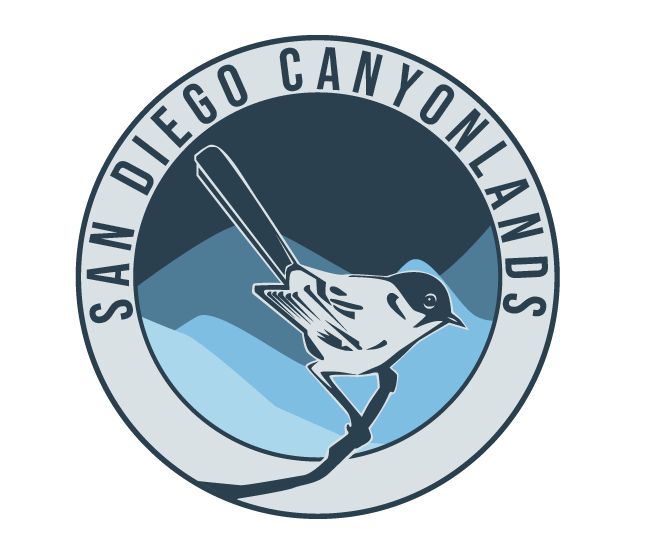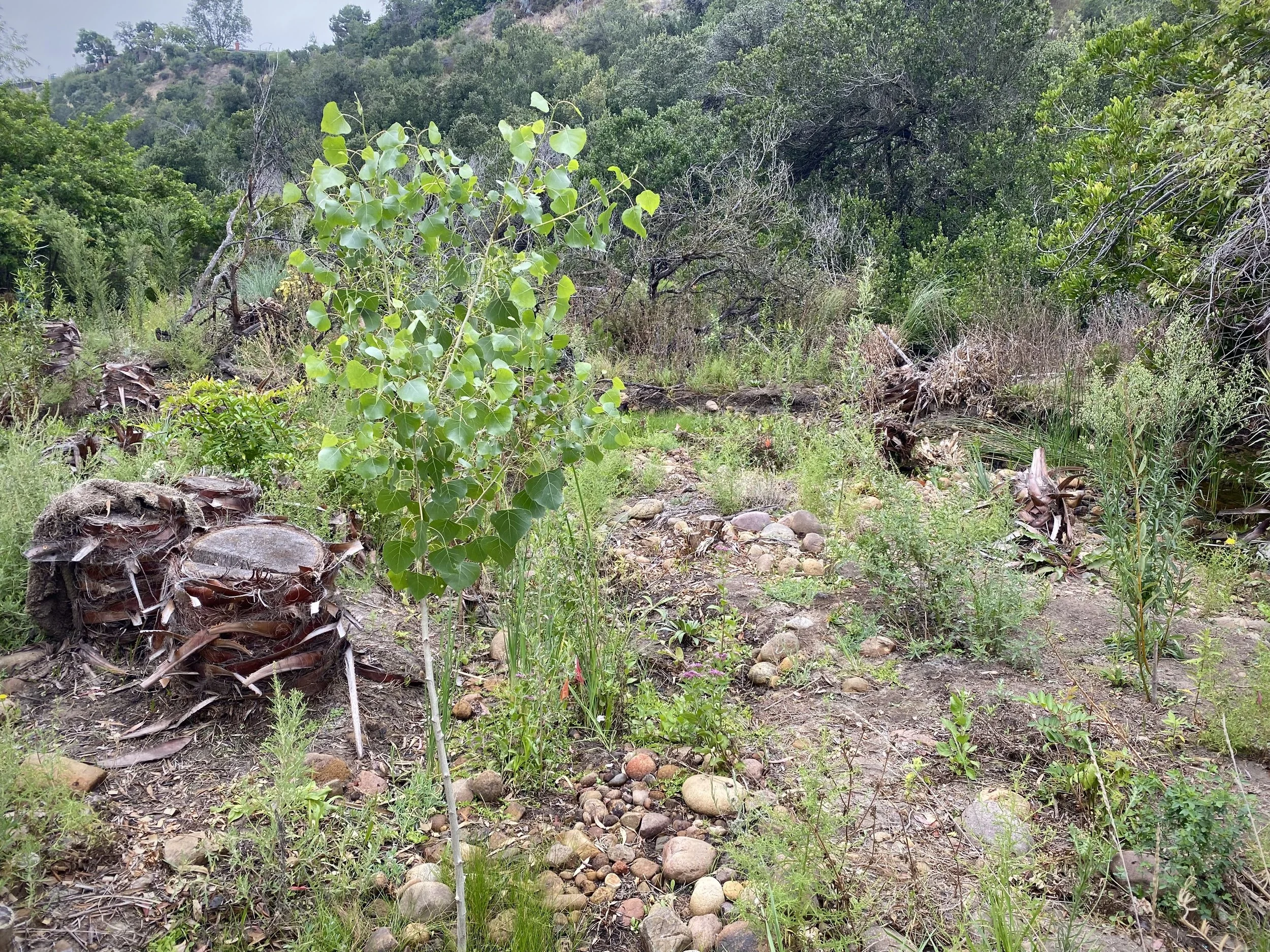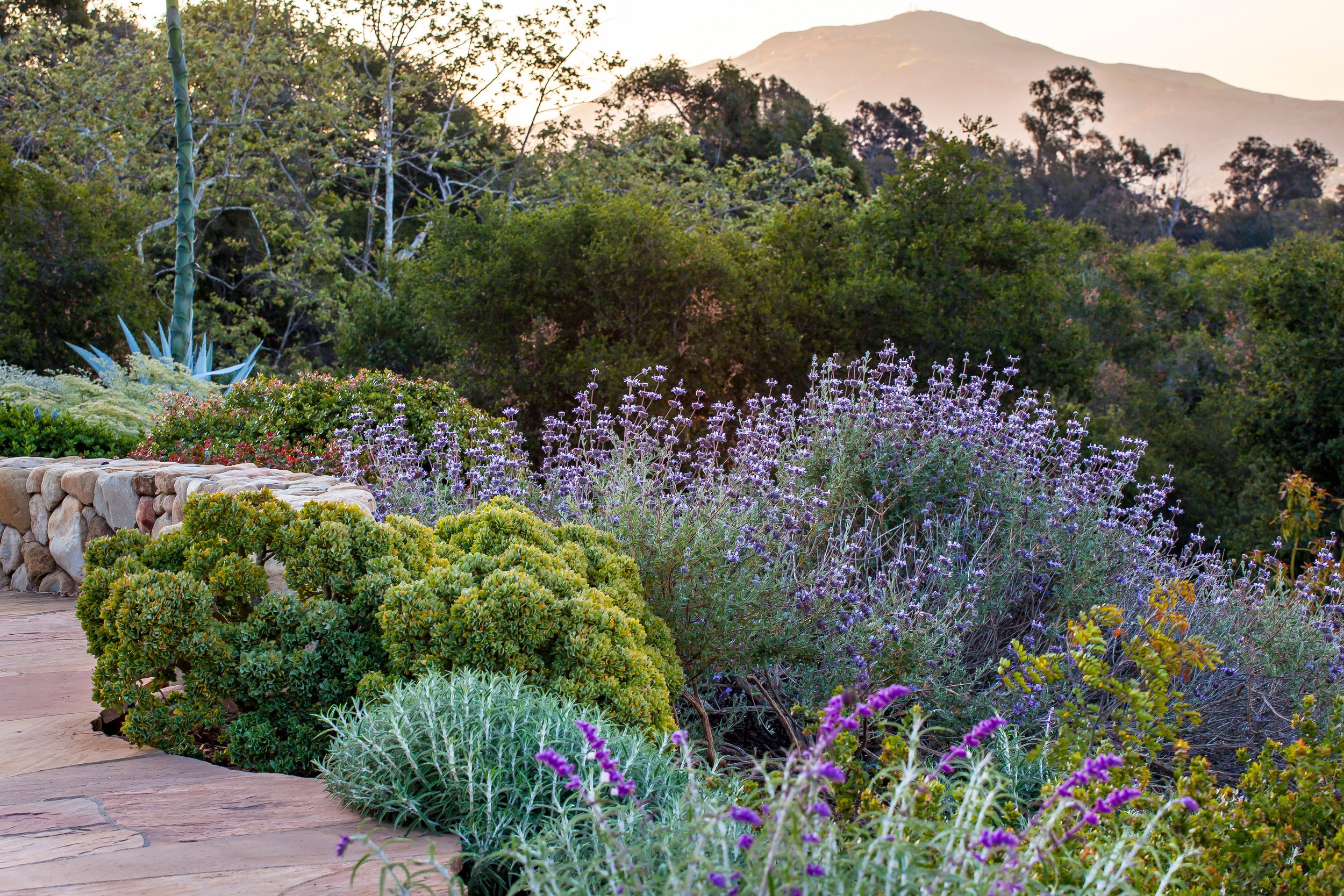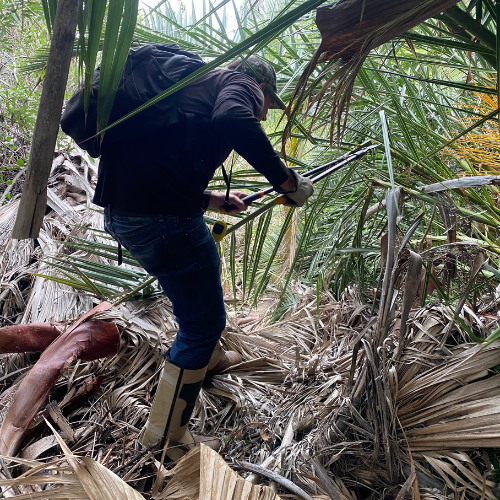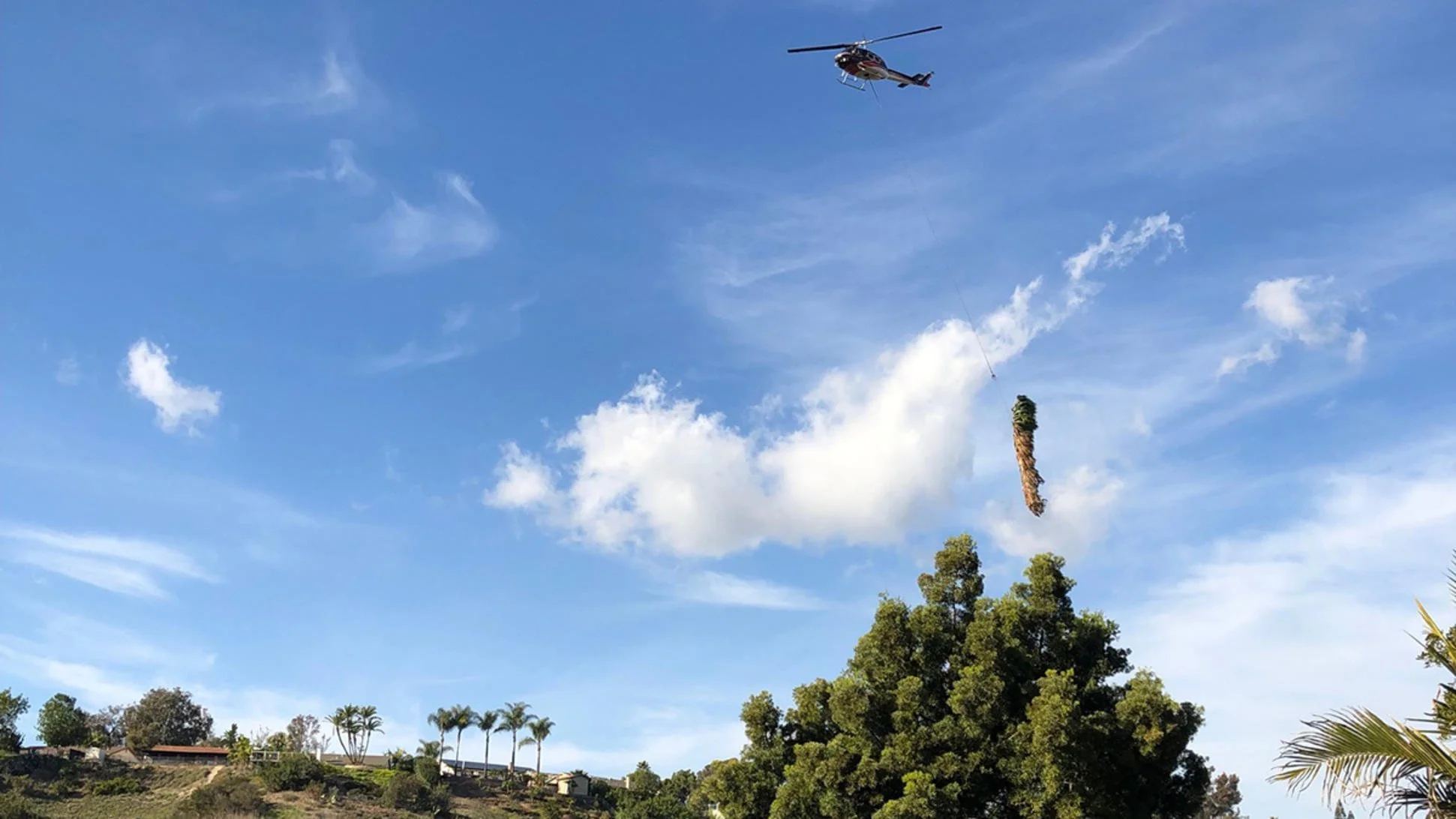Palm Fire in Navajo Canyon, 2022
PRoject overview
Navajo Canyon is within a City of San Diego Multiple Species Conservation Plan Open Space Park and consists of 141 acres owned by the City. San Diego Canyonlands, in partnership with the City of San Diego and the San Diego River Conservancy, are restoring and enhancing 7.2 acres of wetland/riparian and upland habitats within the canyon.
This will be accomplished in several steps, beginning with the removal of an estimated 557 mature, invasive, and non-native Mexican fan palms (Washingtonia robusta), and 43 similarly invasive Canary Island date palms (Phoenix canariensis) by helicopter and trucked off site. Once these high-fire risk and ecologically harmful species have been removed, restoration areas will be designated and native revegetation will be implemented. In wetland/riparian areas, where vegetated coverage is reduced significantly due to removal of non-native species, restoration will include insertion of mulefat (Baccharis salicifolia) cuttings, and willow (Salix spp.) cuttings.
Ruffin Canyon 2022 Case Study:
In December of 2022, San Diego Canyonlands undertook a similar Palm Removal Project in Ruffin Canyon. Our team, alongside San Diego River Conservancy, The City of San Diego Senior Rangers, and West Coast Arborists successfully felled and removed 600 non-native, invasive palms via helicopter.
The extent of Mexican fan palm and Canary Island palm presence in the canyon had resulted in a similar level of ecological devastation, with associated water quality and stormwater flow issues, as well as a heavily increased fire risk to the surrounding urban area.
In riparian areas where palms were removed, we carefully selected prime habitat restoration sites where native plants were introduced. After just one year the plants have taken nicely and the habitat has begun its process of conversion back to a thriving native riparian ecosystem. Throughout the restoration sites, we planted approximately 700 native cuttings/stakes and 150 native, potted plants, including:

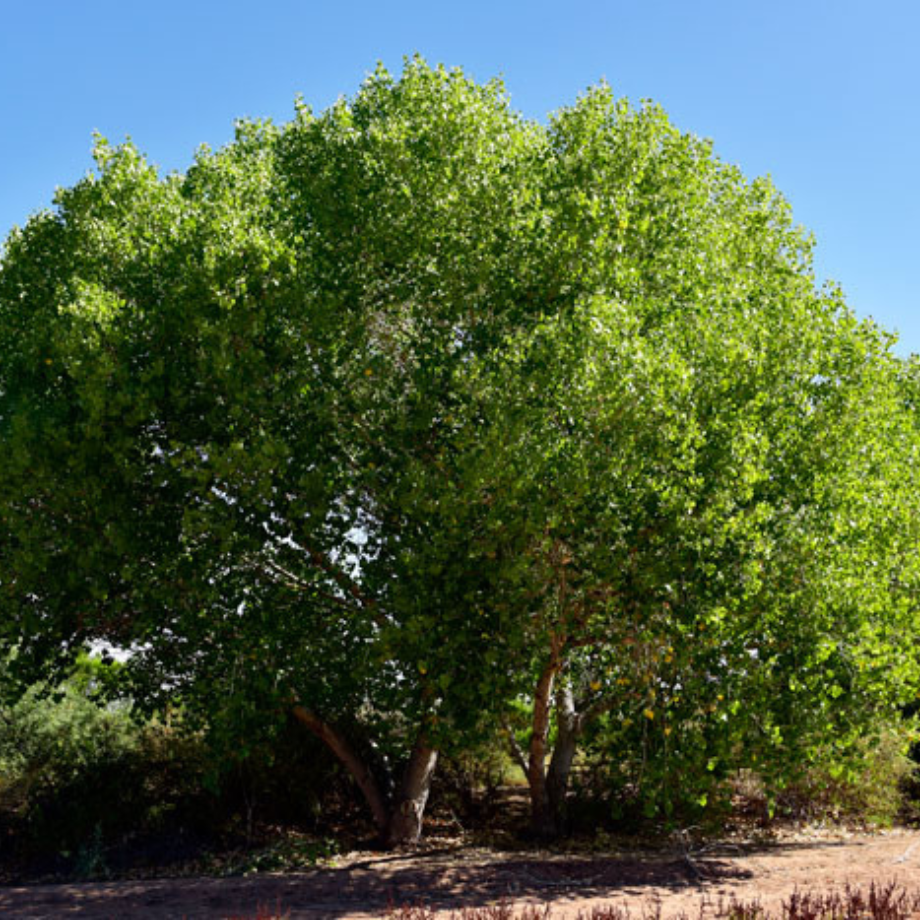


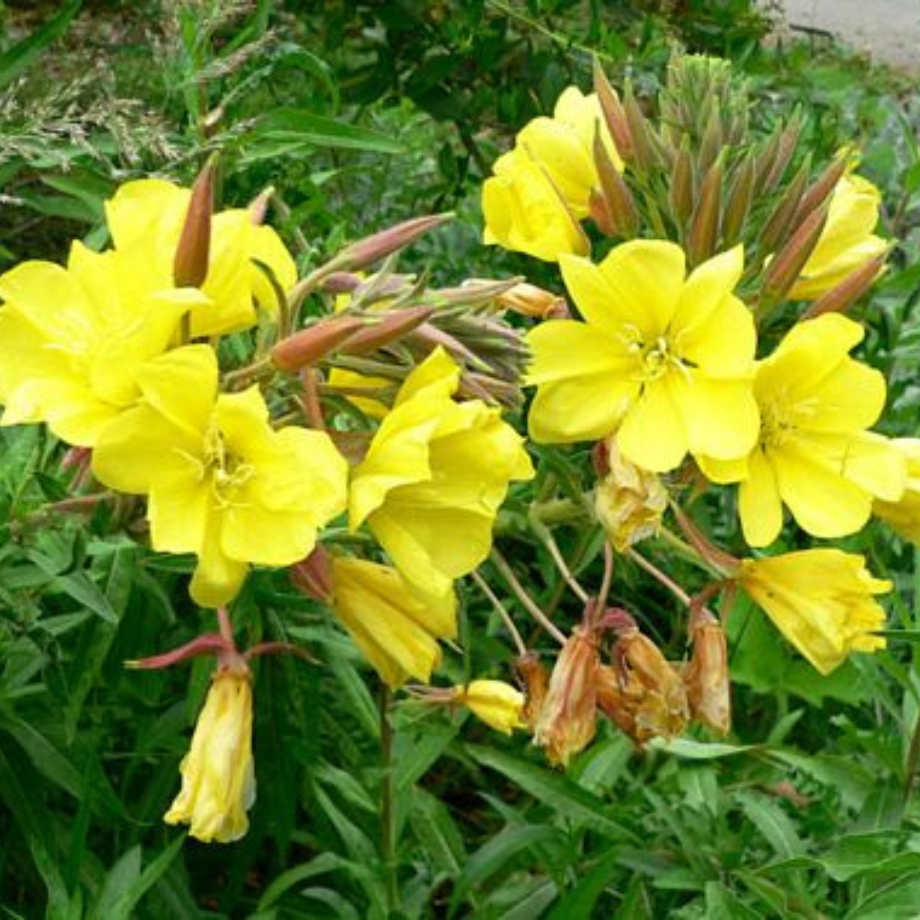
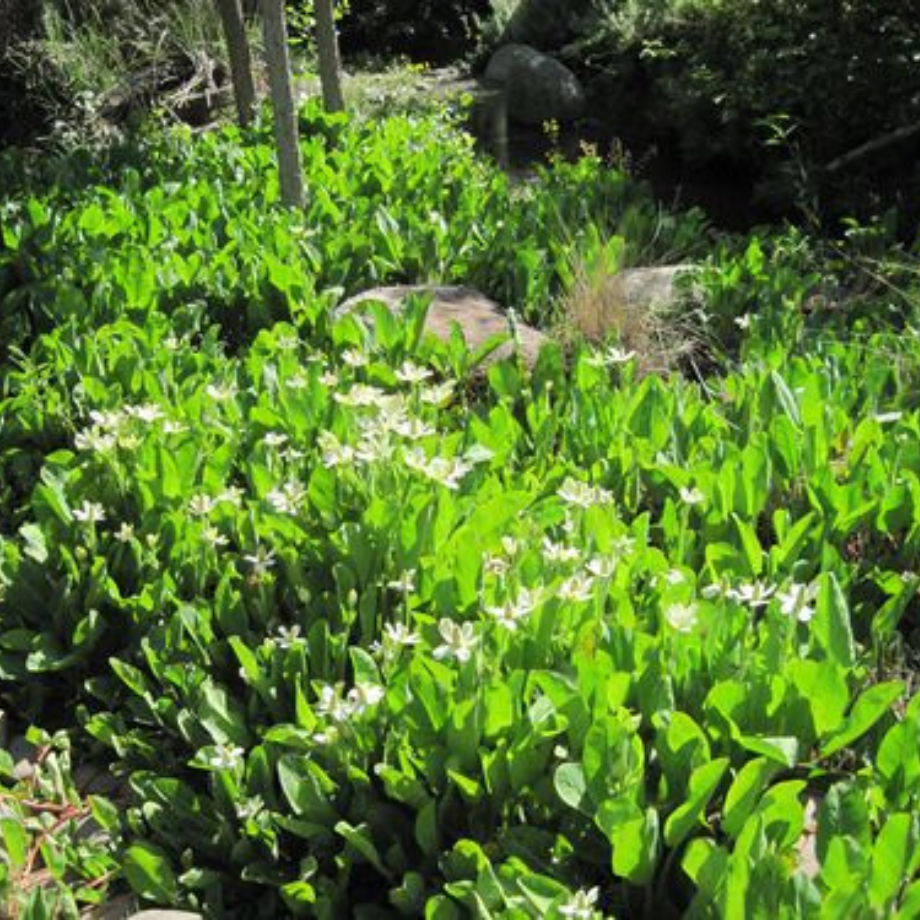
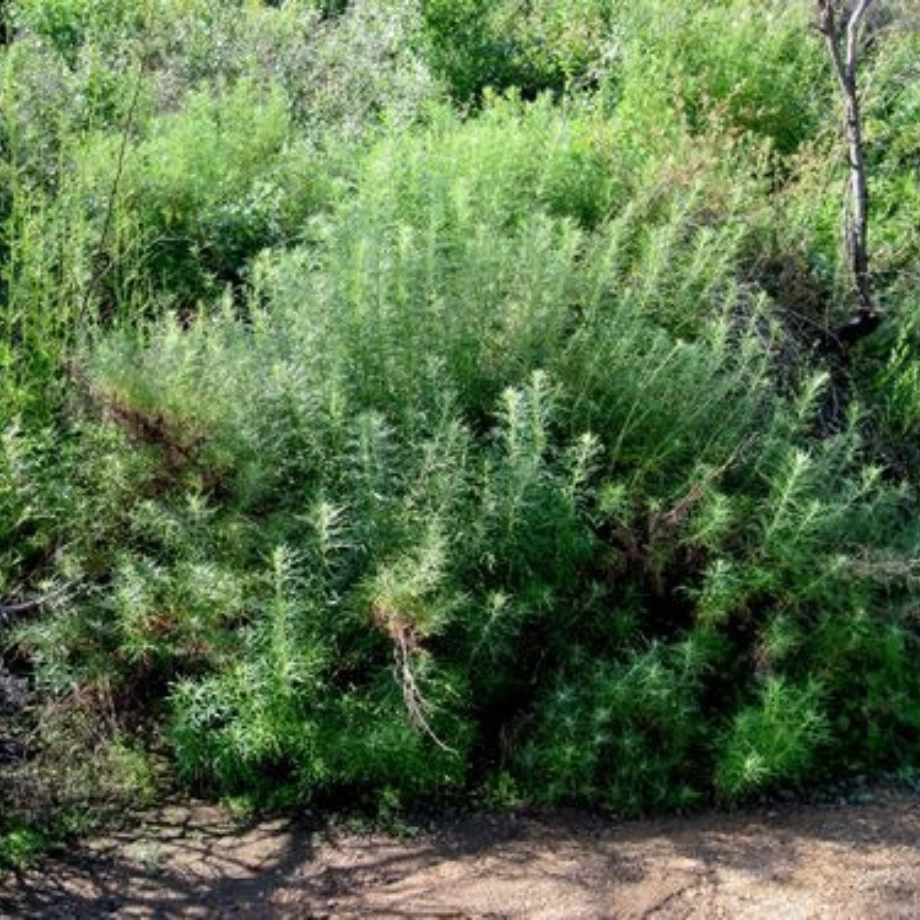
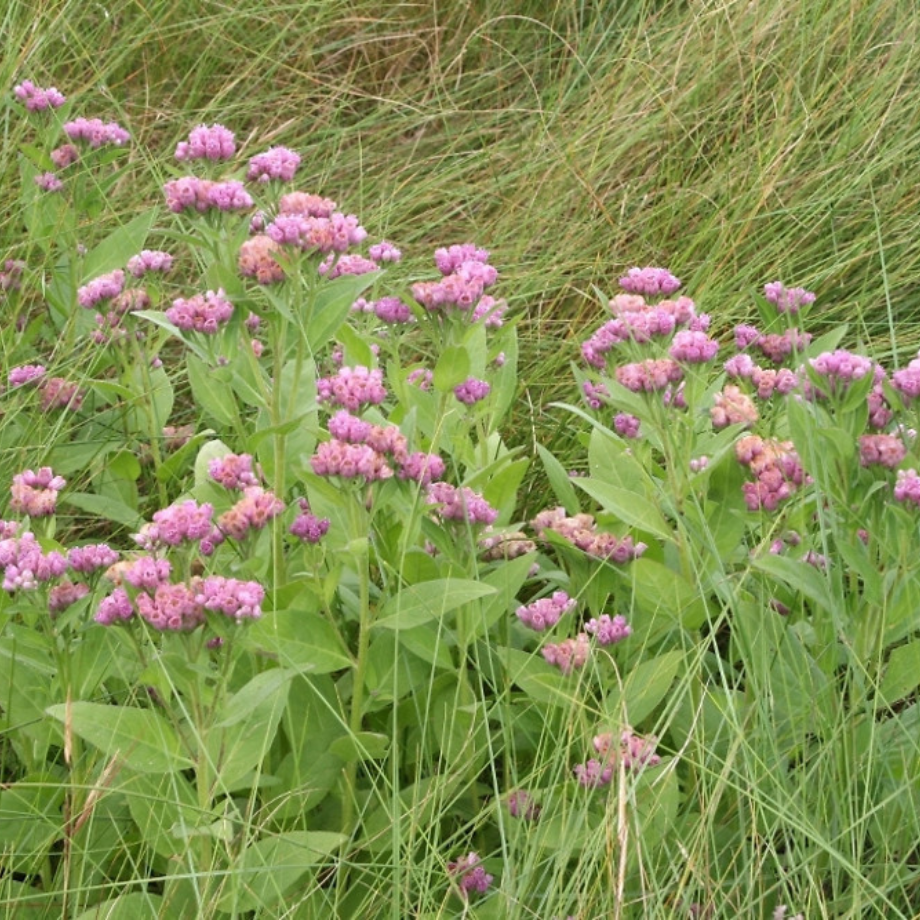
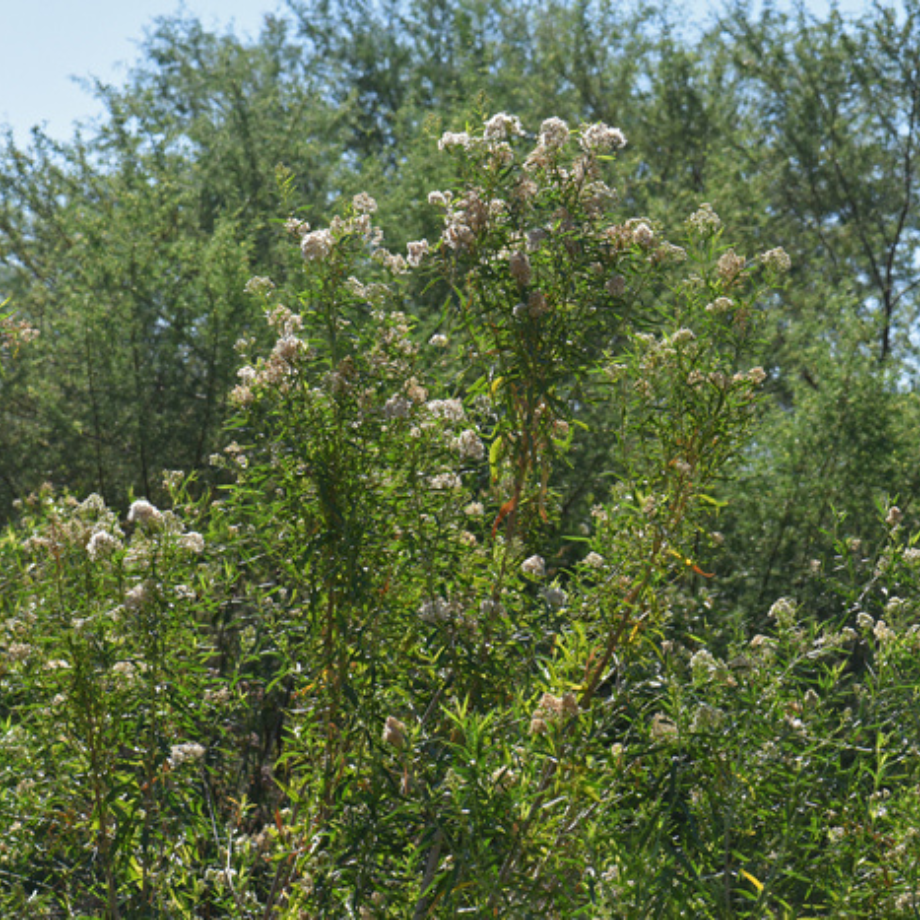
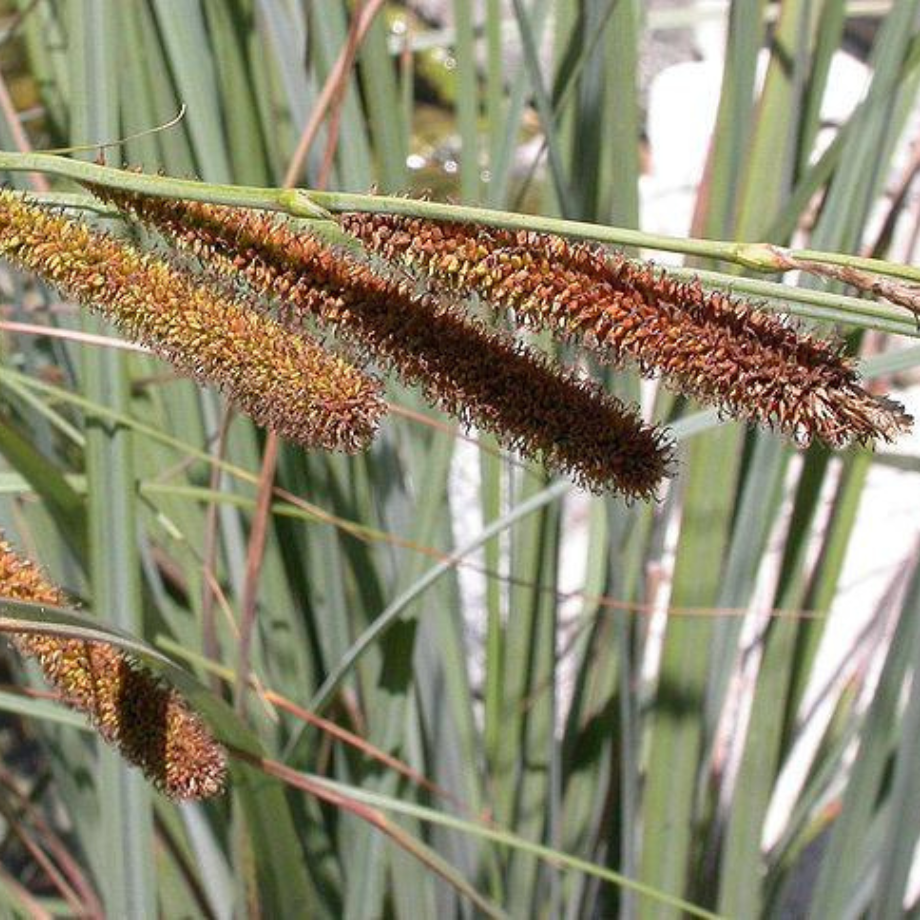

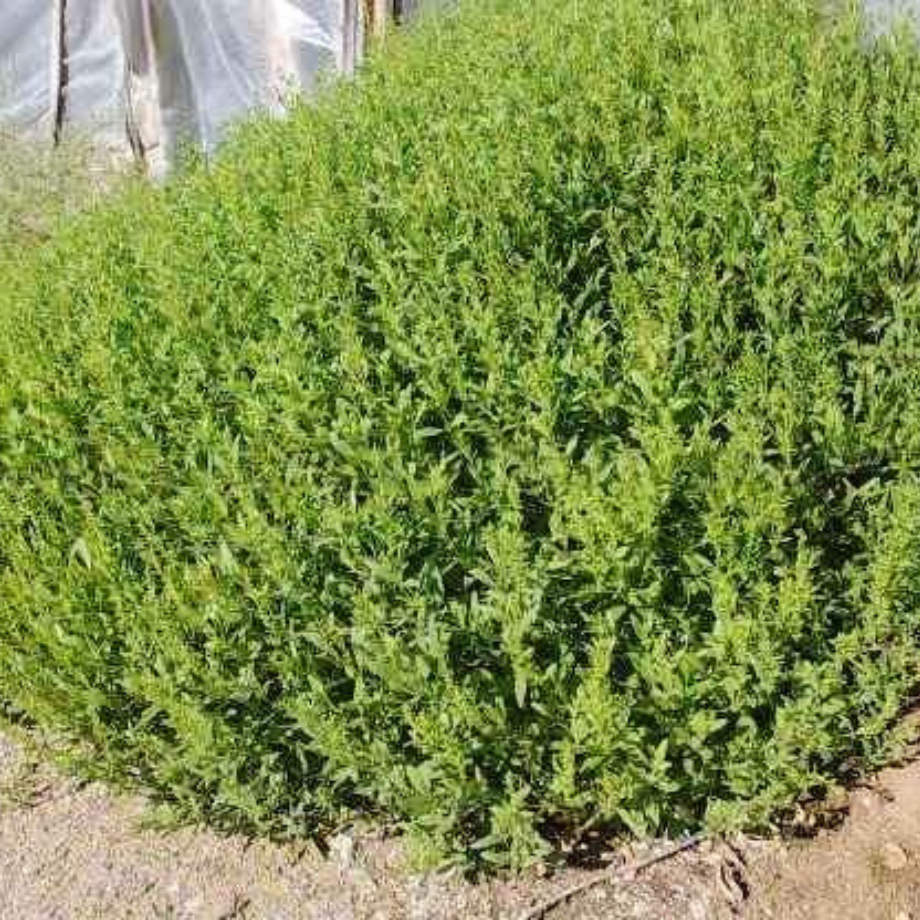
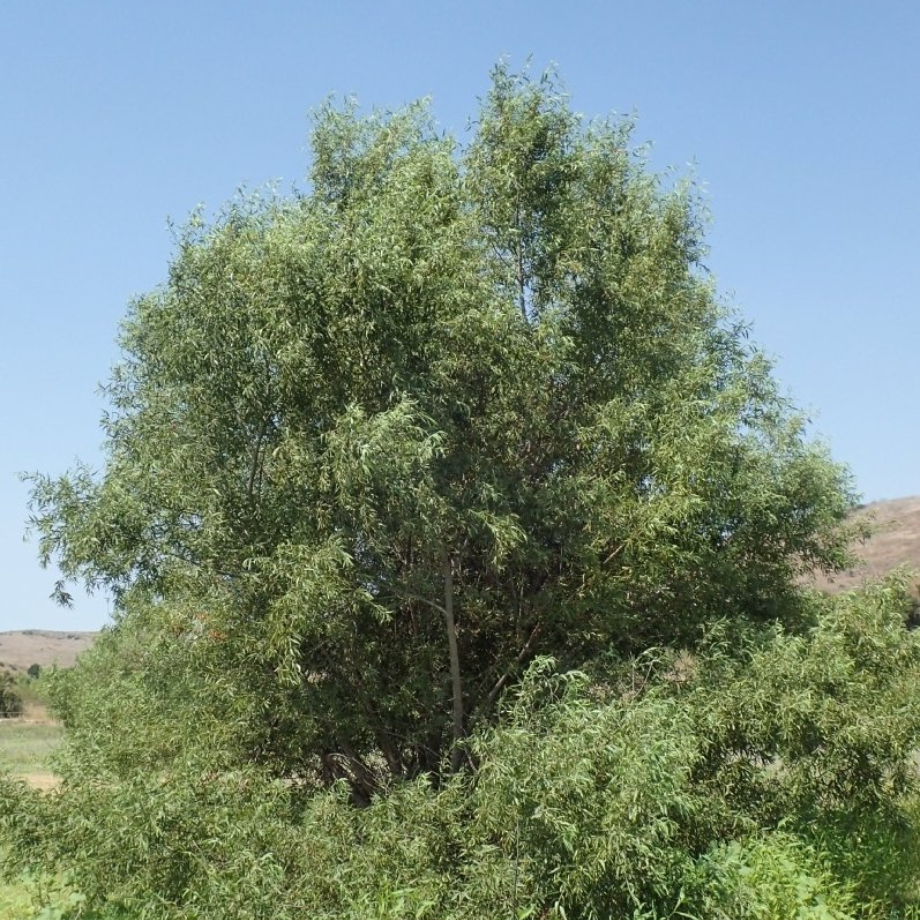
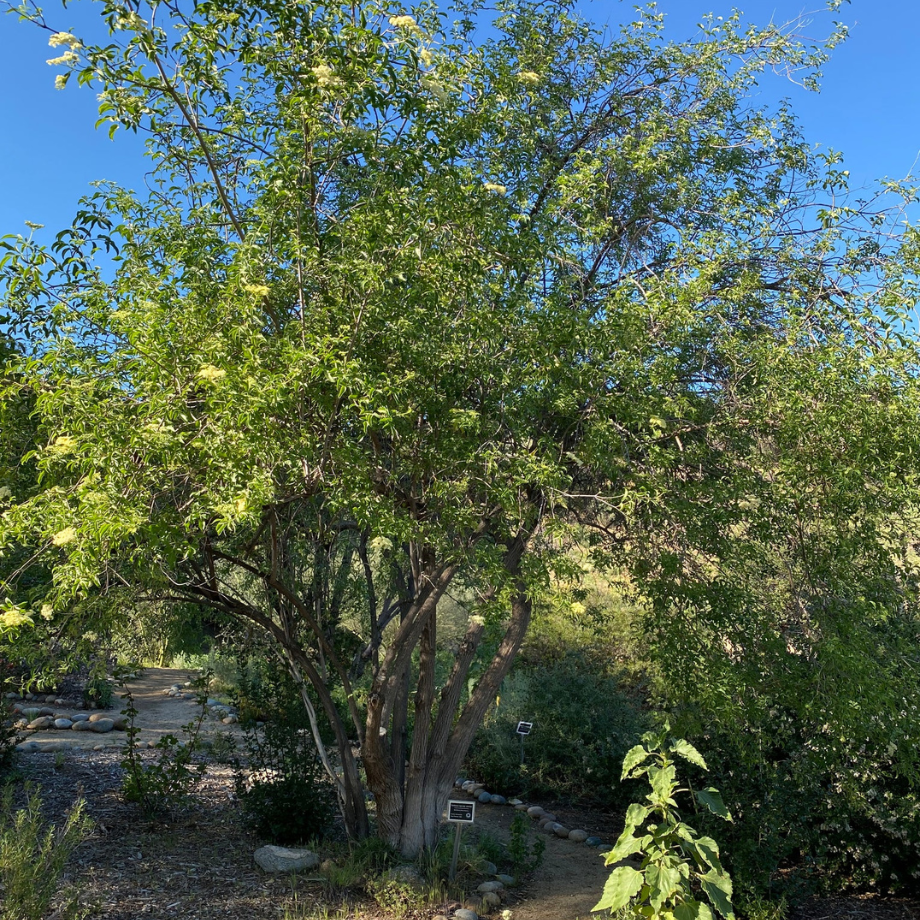
Black Willow (Salix gooddingii)
Elderberry (Sambucus nigra ssp. cerulea)
Cottonwood (Populus fremontii)
Mulefat - (Baccharis salicifolia)
Yerba mansa (Anemopsis californica)
Mugwort (Artemisia douglasiana)
San Diego sagewort (Artemisia palmeri)
San Diego sedge (Carex spissa)
California fuchsia (Epilobium canum)
San Diego marsh elder (Iva hayesiana)
Hooker's evening primrose (Oenothera elata)
Salt marsh fleabane (Pluchea odorata)
Arrowweed (Pluchea sericea)
California rose (Rosa california).
Project Benefits
Removal of the highly flammable palms significantly reduces fire risk, especially for houses along the canyon. San Diego Fire Department supports removing as many palms as possible throughout the canyons
Reduced flooding, erosion, and sedimentation. By slowing the flow of stormwater during storm events and capturing this water in the landscape, this project protects downstream neighborhoods and ecosystems.
Improved air and water quality, through natural filtration and absorption and pollutants, preventing them from entering downstream habitats, San Diego Bay and the Pacific Ocean
Improved urban green space and access to higher quality “nature” (habitat)
Implements resilient, stream side habitat restoration, which supports more nesting bird species and other native wildlife
The native wetland/riparian species that will replace the non-native, invasive palms are adapted to the hydric/wet microclimate in the canyon bottom and will flourish. Once established these species will slow the flow of water down the canyon and filter pollutants out of the stormwater runoff, protecting downstream habitats including San Diego Bay and the Pacific Ocean. As the habitat recovers these compounding effects will attract an increasing diversity and volume of native plant and wildlife species in the Canyon.
Resident (year round) bird species and summer visitors including hooded oriole (Icterus cucullatus), house wren (Troglodytes aedon), Nuttall’s woodpecker (Dryobates nuttallii) nest in native riparian/streamside vegetation including willows, sycamores, and cottonwoods. However, birds like the hooded oriole also nest in the fan palms due to the lack of native riparian vegetation.
As the willows, mulefat, and other marsh/riparian species grow, they will create quality native riparian habitat that will support more birds’ nesting, as well as supporting other native wildlife in the canyon. Large birds including common raven (Corvus corax), American crow (Corvus brachyrhynchos), hawk species, and owl species forage and breed in the canyon. Small rodents and lizards are some of the preferred prey for these birds. By restoring this habitat, all of these species will have greater access to their natural habitats and prey species, further supporting population sustainability and even regeneration.
Neighbors will also benefit from a view and access to improved habitat and wildlife diversity. This canyon and other local canyons support many species of nesting birds.
Video: Phase 1 HEli Lift Operation
Video created by West Coast Arborists
Senior Biologist: Melissa TU
Melissa Tu is a conservation biologist with 24 years of experience in southern California. Since 1999, Ms. Tu has worked with local, state, and federal wildlife agencies to protect and manage San Diego County's open spaces and sensitive habitats.
Ms. Tu's current focus with San Diego Canyonlands is working with the field team on the best practices to remove invasive species and restore habitat in the local canyons; documenting the avian richness in the canyons, conducting nest surveys, and teaching others about local flora and fauna.
Since 1999, Ms. Tu has researched, surveyed, documented, conducted outreach, and worked with CDFW and USFWS to develop conservation and mitigation measures for sensitive habitats and rare plant species, and native bird species and sensitive wildlife species. Ms. Tu has extensive experience working with and managing California least tern, western snowy plover, least Bell’s vireo, and California gnatcatcher populations in San Diego County. Ms. Tu has a recovery permit to survey California gnatcatcher.
How Home Owners Can Benefit Canyon Biodiversity:
Install bird nest boxes in your yard.
Local avian species including barn owl, Bewick’s wren (Thryomanes bewickii), house wren (troglodytes aedon), western bluebird (Sialia mexicana), and even American kestrel (Falco sparverius) are known to nest in human-made nest boxes. Adding these to your property can provide a safe place for them to rear their young and will provide you with an invaluable sense of stewardship of the canyon. The best time to install a nest box is in January or February. If installed now, it will likely need to be cleaned out before the birds begin to nest in late winter/early spring. The boxes can also be damaged by rain. If you want to learn more about nest boxes go to the Cornell Lab of Ornithology website - All About Birdhouses - NestWatchDo not use rodent poison (rodenticide).
- These chemicals bioaccumulate in predators such as owls, raptors, and coyote (Canis latrans), which are natural population control for rodent populations. Killing one rat using rodenticide can impact or kill multiple predators after they feed on the dead carcass.Become informed on the flood, fire and ecological danger of non-native, invasive species in the canyons.
- Non native palms trees (Washingtonia robusta and Phoenix canariensis), giant reed (Arundo donax), pampas grass (Cortaderia selloana), tamarisk (Tamarisk spp.), and other non-native invasive species sharply increase the risk of catastrophic fire, while also impacting erosion and water quality and devastating populations of native flora and fauna that rely on these extremely sensitive canyon habitats.Keep pets on a leash in the canyon and pick up their waste.
- This will help to avoid contamination of waterways and unnatural predation of wild species, which face many confounding threats.Plant native species in your yard.
- Our friends at Native West Nursery and Moosa Creek Nursery sell high quality native plants and have great online resources to help you choose which native plants are most suitable for your landscape. With a property adjacent to a canyon you have a prime opportunity to witness native species in full action. By planting native plants you will attract a plethora of butterflies, pollinators, birds and much more right to your doorstep, where you can watch nature unfold. Check out the San Diego County Native Landscape Program, which our Executive Director helped create, for more information on the positive impact you can make from your own back yard.
